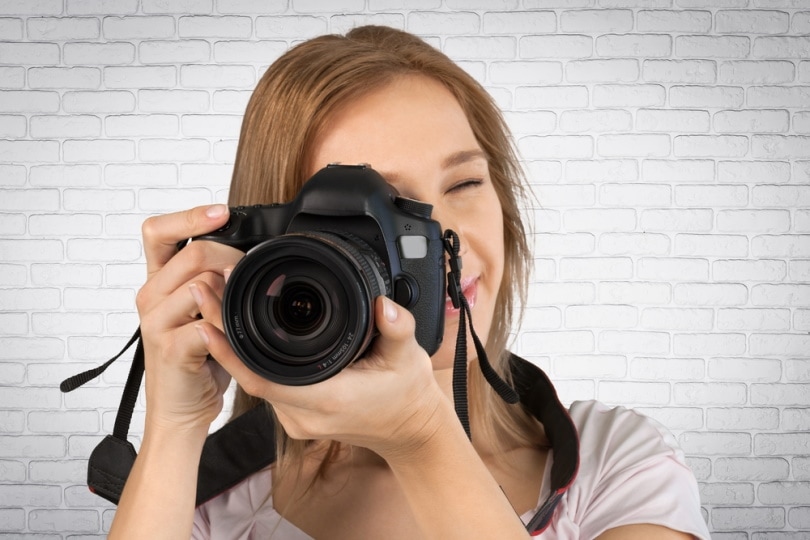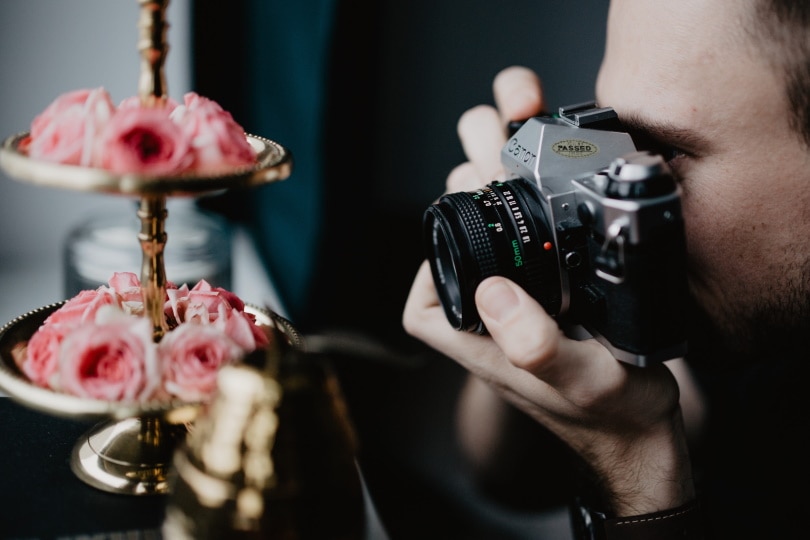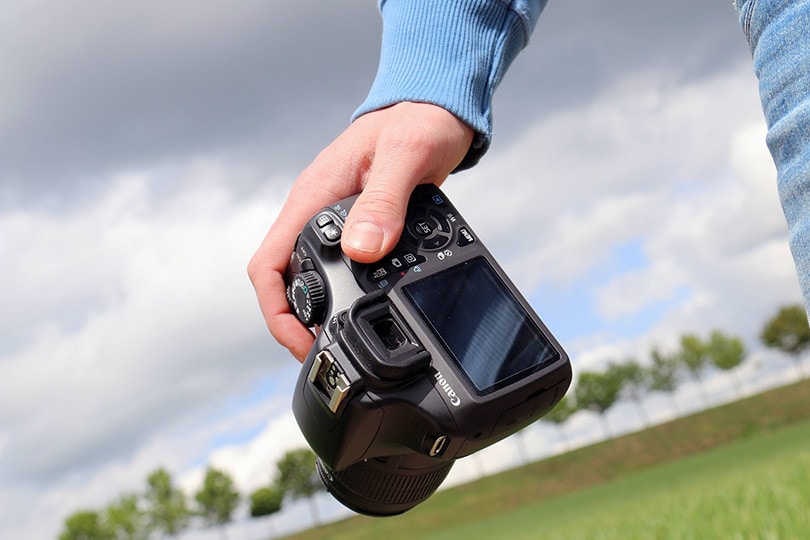How Much Do Cameras Cost in 2024? Are There Additional Costs?
Last Updated on

With the rapid advancements in the technology for smartphones that enables them to have amazing cameras, many people wonder if it’s still worth it to buy a traditional camera. Keep reading as we discuss the average cost of cameras today and what affects their price, as well as why you might choose one over a cell phone.

The Importance of Modern Cameras
While modern cell phone cameras are quite impressive with an increasing number of megapixels, they are not as versatile as a standard camera. Traditional cameras offer the user a great deal of control over the images that they take, including the ability to adjust shutter time, control external lighting, and change lenses.

Megapixels
When choosing a camera, one of the first things that you will want to look at is how many megapixels a photo will contain. A few years ago, it was quite common for cameras to have only a few megapixels, but today, many cameras will have more than 40. One megapixel is equal to 1 million pixels, so a picture containing more megapixels will have more detail. It can mean the difference between seeing individual blades of grass or green fuzz.
Shutter Time
Having the ability to adjust shutter time will enable you to take better pictures. For example, the shutter controls how much light is allowed to hit the film. You will need a slow shutter time to take pictures in a dark area and a fast one to take them in daylight. Fast-moving objects will also require a fast shutter time. Using the wrong shutter time on purpose can lead to an artistic photo. Some smartphones give you a certain level of control, but nothing like what you might find on a traditional one.
Lenses
One of the biggest advantages of using a traditional camera over a smartphone is being able to change lenses, which can help you get pictures that would not be possible with a smartphone. Wide, ultra-wide, telephoto, and macro are just a few lenses that you can find for a camera.

Zoom
One of the biggest advantages of using a traditional camera is that it has mechanical zoom, which can give you a much better image than digital zoom can. Digital zoom has no moving lenses, so it doesn’t provide a true zoom, it just crops your image. Traditional zoom uses two lenses that work like a telescope or pair of binoculars, enabling you to get a true zoomed-in picture with the same number of pixels for clear detail.
Movable Flash
Traditional cameras enable you to use a removable flash so the light can come from overhead, improving the quality of your photos by making them look more natural. Smartphones have the flash attached to the body and don’t have an option for controlling an external flash.

The Average Cost of a Digital Camera
The cost of your camera can vary significantly depending on the type and brand that you get. For example, a camera with a 64-megapixel resolution will cost more than one with 8-megapixels, and a mechanical zoom is more expensive than a digital zoom. Most low-end cameras will usually start around $150 and go up to about $900, with high-end cameras ranging between $800 and $3,000.
| Camera | Megapixels | Replaceable Lenses? | Optical Zoom? | Cost |
| SuperiorTech Vlogging Camera | 48 | Yes | No | $149 |
| KODAK PIXPRO | 16 | No | Yes, 42x | $174 |
| Canon EOS Rebel | 24.1 | No | Yes | $479 |
| Canon EOS Rebel T7 DSLR | 12.1 | No | Yes, 24x | $497 |
| Panasonic LUMIX GX85 | 16 | Yes | Yes | $797 |
| Sony Alpha 7R IV | 61 | Yes | Yes | $3,198 |
Additional Costs to Anticipate
There can be several costs that you might want to anticipate when buying a camera. At a minimum, you will need a carrying case to protect it while you carry it around and to store it. If you take many photos at one time, you might want to consider purchasing extra batteries, so you don’t run out of power, and extra storage cards, so you don’t run out of space. Many modern cameras use USB charging, and you can buy a portable charger to keep it running. Other optional expenses might include additional lenses, carrying cases for those lenses, and lens cleaners. You might also want a tripod and additional lighting equipment.

How Often Should I Purchase a New Camera?
If you take your time and choose a camera that takes good pictures and is easy to use, it can last for years, with no real need to get a new one. One factor that might encourage you to upgrade is the rapidly advancing technology that is producing higher megapixel cameras. Only a few cameras could produce 20-megapixel images several years ago, but today, they are fairly common, with many better options available. This trend will likely continue, so you can probably get a much better camera in a few years.
How Can I Keep My Camera Working Properly?
The single best thing that you can do to keep your camera working is to keep the lens covered when you are not using it, to prevent it from getting scratched. Keeping it in a good case will also protect it from damage while storing it and from moisture, which could damage the camera internally.


Conclusion
Digital cameras usually cost between $150 and $3,000, depending on what features you need. Most people looking for something to use for vacations and family photos will do well paying less than $500. For example, the Kodak PixPro and Canon EOS Rebel are great choices. If you are looking for something with more power and features, cameras like the Panasonic Lumix GX85 will better serve you but will cost a bit more.
Featured Image Credit: Billion Photos, Shuterstock
About the Author Ed Malaker
Ed Malaker is a veteran writer who contributes to a wide range of blogs covering information on computer programming, pets, birding, tools, fitness, guitars, and optics. Outside of writing, Ed is often found working in the garden or performing DIY projects in the house. Ed is also a musician, spending his time composing music for independent films or helping people repair their guitars.
Related Articles:
How to Clean a Refractor Telescope: Step-by-Step Guide
How to Clean a Telescope Eyepiece: Step-by-Step Guide
How to Clean a Rifle Scope: 8 Expert Tips
Monocular vs Telescope: Differences Explained (With Pictures)
What Is a Monocular Used For? 8 Common Functions
How to Clean a Telescope Mirror: 8 Expert Tips
Brightfield vs Phase Contrast Microscopy: The Differences Explained
SkyCamHD Drone Review: Pros, Cons, FAQ, & Verdict
